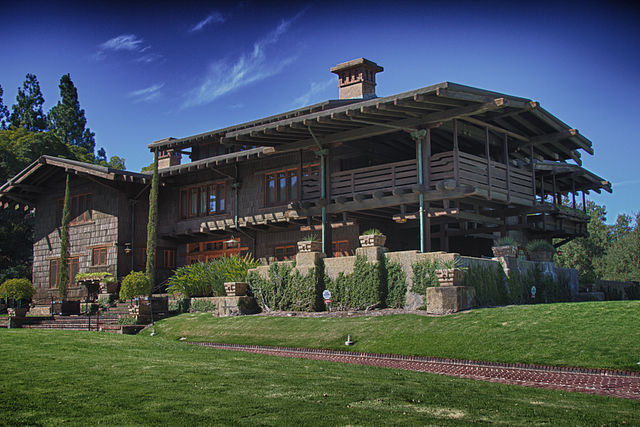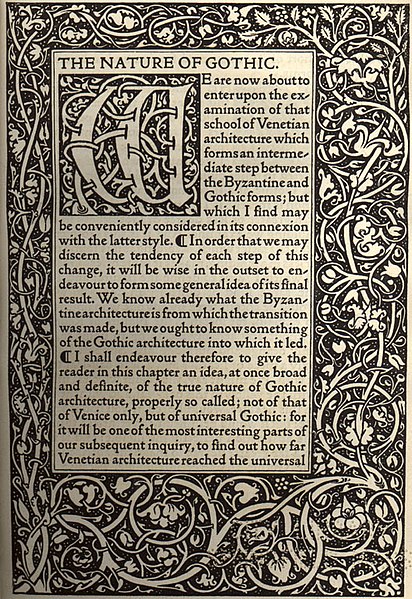American Craftsman is an American domestic architectural style, inspired by the Arts and Crafts movement, which included interior design, landscape design, applied arts, and decorative arts, beginning in the last years of the 19th century. Its immediate ancestors in American architecture are the Shingle style, which began the move away from Victorian ornamentation toward simpler forms, and the Prairie style of Frank Lloyd Wright.
An American Craftsman-style bungalow in San Diego, typical in older neighborhoods of many Western and Upper Midwest American cities
The Gamble House, an iconic American Arts and Crafts design by Greene & Greene in Pasadena, California, built between 1908 and 1909
Facade of the Castle in the Clouds and lawn overlooking Lake Winnipesaukee in New Hampshire, built 1913–1914
The Edward Schulmerich House in Hillsboro, Oregon, completed in 1915
The Arts and Crafts movement was an international trend in the decorative and fine arts that developed earliest and most fully in the British Isles and subsequently spread across the British Empire and to the rest of Europe and America.
William Morris' design for Trellis wallpaper, 1862
The Nature of Gothic by John Ruskin, printed by William Morris at the Kelmscott Press in 1892 in his Golden Type inspired by the 15th-century printer Nicolas Jenson. This chapter from The Stones of Venice was a sort of manifesto for the Arts and Crafts movement.
Pugin's house "The Grange" in Ramsgate, from 1843. Its simplified Gothic style, adapted to domestic building, helped shape the architecture of the Arts and Crafts movement.
William Morris, a textile designer who was a key influence on the Arts and Crafts movement








